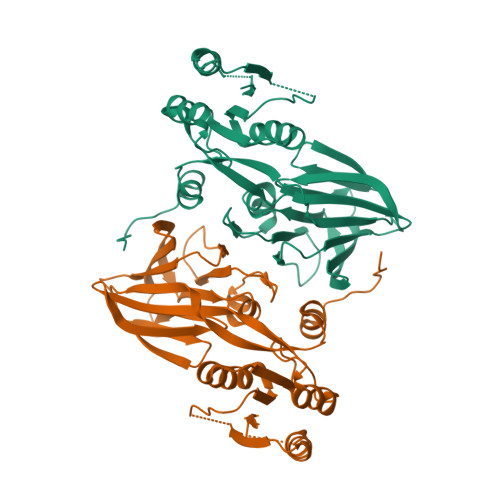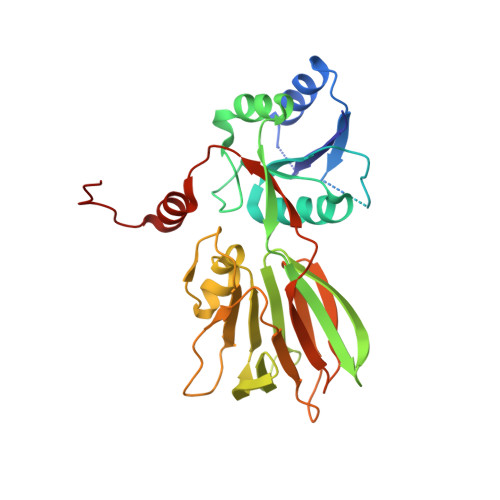NAD-binding mode and the significance of intersubunit contact revealed by the crystal structure of Mycobacterium tuberculosis NAD kinase-NAD complex
Mori, S., Yamasaki, M., Maruyama, Y., Momma, K., Kawai, S., Hashimoto, W., Mikami, B., Murata, K.(2005) Biochem Biophys Res Commun 327: 500-508
- PubMed: 15629142
- DOI: https://doi.org/10.1016/j.bbrc.2004.11.163
- Primary Citation of Related Structures:
1Y3H, 1Y3I - PubMed Abstract:
NAD kinase is a key enzyme in NADP biosynthesis. We solved the crystal structure of polyphosphate/ATP-NAD kinase from Mycobacterium tuberculosis (Ppnk) complexed with NAD (Ppnk-NAD) at 2.6A resolution using apo-Ppnk structure solved in this work, and revealed the details of the structure and NAD-binding site. Superimposition of tertiary structures of apo-Ppnk and Ppnk-NAD demonstrated a substantial conformational difference in a loop (Ppnk-flexible loop). As a quaternary structure, these Ppnk structures exhibited tetramer as in solution condition. Notably, the Ppnk-flexible loop was involved in the intersubunit contact and probably related to the NAD-binding of the other subunit. Furthermore, the two residues (Asp189, His226) substantially contributed to creating NAD-binding site on the other subunit. The two residues and the residues involved in NAD-binding were conserved. However, residues corresponding to the Ppnk-flexible loop were not conserved, making us to speculate that the Ppnk-flexible loop may be Ppnk-specific.
Organizational Affiliation:
Department of Basic and Applied Molecular Biotechnology, Graduate School of Agriculture, Kyoto University, Uji, Kyoto 611-0011, Japan.


















